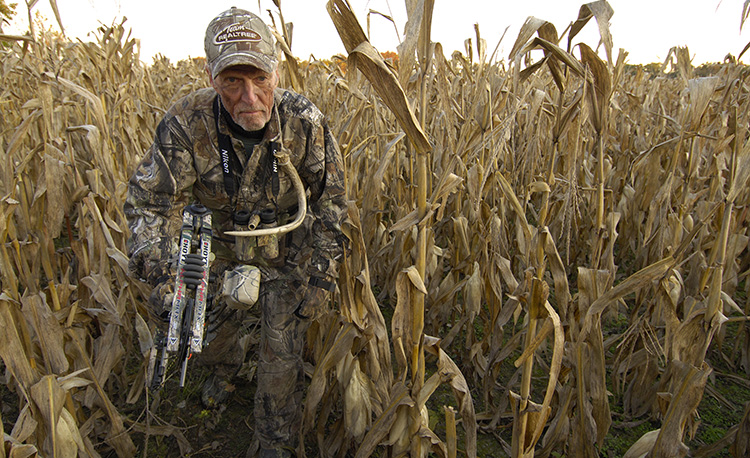Jamie from IN asks,
Bill, I see that you said you used to plant the whole farm to corn back in its hey day. Did you plant your fields corn to corn for several years in a row? Did you see much decline in the soil quality if that was the case? Im assuming you did that for the level of cover you had with it and then the late season food it provided. How about other small food sources that would feed the deer during the year when corn wasn't doing much of anything in the way of providing nutrition? I assume you had other plots such as clover, alfalfa and brassicas etc.?
Bill responds,
Topic: Planting Corn Food Plots:

For several years I planted all the tillable acres on my farm to corn and left it until late winter before harvesting. That standing corn made it super easy to sneak in and out of my stands and produced awesome late season attraction. When the input costs for corn sky-rocketed in the late 2000s, it just wasn’t sustainable financially any longer.
Jamie,
Yes, for five or six years I paid a neighbor to plant corn in the tillable fields every year. That was when inputs were way cheaper than they are now. I could plant everything for less than $20k and when the winter was mostly over I would pay the same farmer to pick the fields and haul the “crop” to the co-op. I usually about broke even doing that. We used hybrids that were tolerant to the specific issues that come from planting corn on corn so I did OK in that way.
But, when the inputs started to significantly rise in the late 2000s, I stopped. I got spooked when I had $35k+ in the ground and no crop insurance. The crop insurance agents wouldn’t cover me because they said it was “just a big food plot” and that I wasn’t serious about trying to make a profit. Plus, my crop yield history was not good.
I started cash renting those acres (about 75 of them) at that time. It worked out OK for a few years. The cash rent farmer also planted my bigger food plots each spring along with his commercial fields and I paid him a custom rate for those planted acres. He was alternating between corn and beans during those years.
Everyone was happy until we had a couple of really wet years and then a dry year and the farmer wasn’t harvesting much. It was not great soil to begin with and when you throw in some deer and varmint damage on top, his yields were not good. He gave it up in the mid-2010s.
That is when I decided mine was not a good farm for making money and gave up on that idea – other than some CRP fields, which paid the property tax, the food plot expenses and produced a small return. That’s when I decided to use my own equipment and only plant those fields that I needed to feed the deer during the winter and let the others go fallow. I never harvested an acre. I would rotate often enough to control weeds and it worked OK.
That is the history of how I managed those tillable acres. Now the other part of your question.
I did plant and leave the corn standing for three reasons. First, great late season attraction – the farm held tons of deer during the winter. One year we found 180 sheds!
Second, cover so that the field edges were nearly as good as the deep timber during the rut. I could hunt pretty much anywhere on the farm and expect to see good morning action. That cover also kept anyone driving by the farm from seeing the deer (and possibly shooting at them). Out of sight, out of mind.
Third, the standing corn made it super easy to get to and from stands without spooking deer. It worked really, really well. The approach was just not sustainable when the corn input costs sky-rocketed.
As you mentioned, I did have a number of clover and alfalfa plots/fields on the farm for summer food. Probably about 30 acres. I had a local farmer who put the alfalfa up on halves and bought my half. That worked really well for a while too. Again, the soil was not awesome and did not drain well (too much clay), so if we had a couple of wet years the alfalfa would fail. So that, unfortunately, was not a good long-term solution either, but in other areas with better dirt, alfalfa would be a very good summer food source.
After I stopped the alfalfa program (it is super expensive to establish and manage alfalfa) I put those roughly 30 acres into a rotation of clover and brassicas. That worked really well, was easy to manage and not super expensive, but it also didn’t yield an income (which alfalfa did).
That’s what I did. I think it worked out pretty well for the low quality of the ground (and the small, very vulnerable fields) I was dealing with there. Good luck. (1/10/22)
